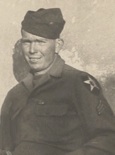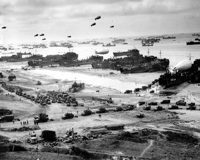About the 23rd Infantry


The “Men of Company D” were stationed at Fort Sam Houston in San Antonio, Texas. There they trained and performed maneuvers in preparation for a mission they knew was to come but did not know the destination. The men grew close with one another, making friendships and bonding as a unit. After the war many of the men returned to start a new life. Not until late in their lives did they decide to get back together to share stories
The 23rd Infantry had many Companies of menBelow is a brief history of
World War II (Brief History) - U.S. 2nd Infantry Division.
As part of the build up for Operation Overlord, the Normandy invasion, the 2nd Inf. Div. was transferred from Fort Sam Houston to Ireland in October 1943. On June 7, 1944, D Day +1, the division stormed ashore at bloody Omaha Beach. While other units were stalled by the determined German resistance, the Indianheads blasted through the hedgerows of Normandy. After a fierce, 39-day battle, the 2d Inf. Div. took the vital port city of Brest, which was liberated on Sept. 18, 1944. From positions around St. Vith, Belgium, and throughout the Battle of the Bulge, the 2nd Inf. Div. held fast, preventing the enemy from seizing key roads leading to the cities of Liege and Antwerp. Resuming the offensive on Feb. 6, 1945, the division joined the race to annihilate the fleeing Wehrmacht. At wars end (V-E Day), they were in Pilsen, Czechoslovakia.
November 20, 1942 - 2nd Division moved to Camp McCoy, Wisconsin
September 27,1943 - the Regiment left Camp McCoy
October 8, 1943 - Sailed from New York
October 20, 1943 - Arrived in Northern Ireland
April 16,1944 - The Regiment sailed to South Wales
June 7, 1944, - The Twenty Third Infantry landed on Omaha Beach with the first invasion forces. In slow, painful hedgerow fighting, the Regiment inched its way forward day after day against hard fighting enemy paratroop elements. St. Georges d'Elle, Hill 192 (which commanded St. Lo), St. Jean des Baisants, Etouvy, Vire, Truttemer le Grand and Tinchebray were scenes of bitter fighting up to August when the organized German resistance in Normandy collapsed.
Landed near the village of Vierville, France.
From August 21 - September 19 - After an overnight motor march of 210 miles to Brest, the Regiment battled the 2nd German Paratroop Division which fanatically defended the surrounding hills and villages. Brest, the scene of some of the most savage and bitter street fighting of the war, fell in 39 days.
September 18, 1944 - The formal capitulation of the Fortress to the 2nd Division occurred. Its hard-driving leader, General Herman B. Ramcke, was captured the following day on the nearby Crozon Peninsula.
Sept. 18, 1944 - took the vital port city of Brest, which was liberated
St. Vith, Belgium, and throughout the Battle of the Bulge.
September 30, 1944 - Another rapid motor and train move of 720 miles on saw the 23d Infantry crossing France and Belgium to new battle positions on the German border. Defensive positions were taken up along the Siegfried Line just north of Luxemburg.
November - The first ceremony of American troops on German soil was a 23d Infantry parade south of St. Vith. Major General W.M. Robertson, Divisional Commander, presented decorations for heroism to officers and men of the Regiment.
December 12, 1944 - The Regiment moved 30 miles north to the vicinity of Sourbrodt, Belgium.
December 16, 1944 - In the Battle of the Bulge, the German break-through on found all three battalions of the 23d Infantry fighting savagely in the line. The failure of the enemy to accomplish a penetration in the division sector, despite repeated tank and strong infantry. attacks, upset the entire German plan of action to reach and cut off the vital supply nets at Liege. The Regiment stopped attack after bloody attack. This action was summed up by General Courtney Hodges, Commanding General of the 1st Army, who declared, "What the 2nd Division has done in the last four days will live forever in the history of the United States Army."
The Battle of the Bulge lasted from December 16, 1944 to January 28, 1945.
January 13-23, 1945 - The First Division fought under the most severe climatic conditions. It spearheaded a drive that broke the determined enemy resistance in the vital Ondenval-Iveldingen Pass to clear the way for armored thrusts into St. Vith, Belgium. Sleet, rain and bitter cold froze the men's clothing to their bodies as they, struggled through waist-deep snow over rough terrain. The enemy forces, principally the 8th Regiment, 3rd Panzer Division, were decimated. So heavy were enemy losses in men and material that the 8th Regiment ceased to exist as a fighting force.
Soon after, the 23d Infantry Regiment was again on the offensive in the Siegfried Line, pushing through the
My father, Cecil Skaines, shown here in Paris, France.


